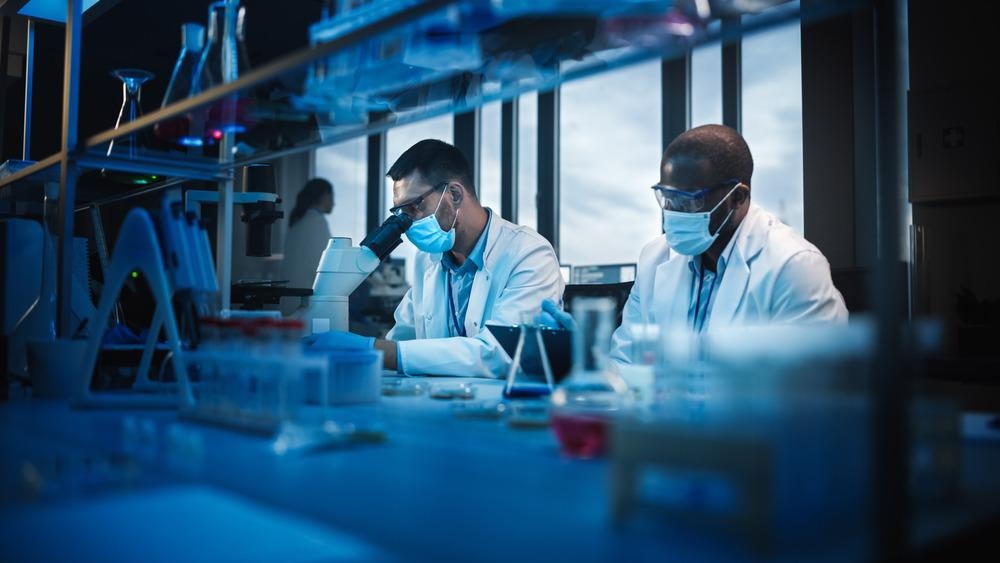Early detection of the SARS-CoV-2 virus (COVID-19) is critical to stopping the spread of this contagious disease. The current diagnostic methods for COVID-19 are expensive and difficult to handle. Hence, there is a need for a quick, efficient, and user-friendly detection method.

Study: Nanobody-based label-free photoelectrochemical immunoassay for highly sensitive detection of SARS-CoV-2 spike protein. Image Credit: Gorodenkoff/Shutterstock.com
In an article recently published in Analytica Chimica Acta, the authors fabricated a rapid and efficient nanobody-based label-free photoelectrochemical (PEC) immunosensor to detect the severe acute respiratory syndrome coronavirus type 2 (SARS-CoV-2) spike protein (SP)
COVID-19 Diagnostic Methods
COVID-19, caused by the SARS-CoV-2 virus, has an enveloped structure with single-stranded ribonucleic acid (ss-RNA) as its genetic material. Currently used tests to detect COVID-19, such as reverse transcription-polymerase chain reaction (RT-PCR) and computed tomography (CT) scans are expensive and time-consuming, while the immunoassay is a cost-effective and facile method. In COVID-19 patients, the highly expressed angiotensin-converting enzyme 2 (ACE2) binds to the SP on the envelope of SARS-CoV-2 and causes infection.
Immunoassay is a biochemical method used for the qualitative and quantitative determination of biomarkers specific to antigen-antibody immunoreaction. However, in the label-free immunoassay method, the results are determined by the steric hindrance effect caused by antigen-antibody immunoreaction, which hinders the photoinduced charge diffusion to the conductive matrix, thus reducing the photoelectric current. PEC immunosensor is highly sensitive, rapid, and selective in detecting COVID-19.
Niobium (Nb) can couple with a PEC immunosensor of higher density and raise a better signal-to-noise ratio than a conventional antibody. This coupling reduces the limit of detection (LOD) and increases sensitivity for antigen realization.
Novel PEC Immunoassay for COVID-19 Diagnosis
In the present study, the authors fabricated a label-free detection, Nb-based PEC immunoassay for detecting SARS-CoV-2 SP. The nanobody was immobilized based on the advantage of the surface plasma resonance (SPR) effect of gold (Au) nanoparticles and the excellent photoelectric performance of Au-deposited titanium oxide (Au@TiO2). This nanobody anchored to Nb through conjugates results in the Nb/Au@TiO2 nanoplatform. The authors have realized the goal of enhancing SP sensitivity through the Nb-based PEC immunoassay. The fabricated immunoassay platform could detect the virus even in 0.015 to 15000 picogram per milliliter concentrations.
Nb-Based PEC Immunoassay
X-Ray diffraction studies (XRD) revealed the anatase phase of TiO2. The XRD spectral peaks of Au@TiO2 showed that deposition of Au did not affect TiO2 phase behavior. Furthermore, the peaks at 38.2, 44.4, 64.6, and 77.6 degrees confirmed the successful deposition of Au on TiO2 spheres. Scanning electron microscope (SEM) images of Au@TiO2 revealed different sized spheres and stacked nanoparticles, and diffuse reflectance spectroscopy (DRS) showed strong absorbance of Au@TiO2 in a redshift of approximately 18 nanometers.
The deposition of Au on TiO2 enhanced the solar energy utilization capability. PEC measurements prove that the presence of Au restrains the recombination of carriers from bulk and surface of TiO2.
Au@TiO2 helped enhance PEC performance, predicted based on DRS characterization and PEC measurements and thus can be used to construct a label-free PEC immunosensor. Based on Nb of the SP as a recognition site, Nb was immobilized on Au@TiO2 electrode forming Nb-Au conjugates.
The construction of Nb-based PEC immunoassay used Au@TiO2 nanomaterial as base and Nb as a recognition site for SP detection with high sensitivity. The immunoreaction between SP with Nb is because of the steric hindrance effect.
The analytical performance of Au@TiO2-based PEC immunoassay for its sensitivity towards SP was predicted by conducting optimization experiments. The results showed that photocurrent response did not correlate to Au@TiO2 dispersion. However, with increased suspension concentration, SP/Bovine serum albumin (BSA)/Nb/Au@TiO2/indium tin oxide (ITO) showed a gradual increase in photocurrent. Further, a too high suspension concentration showed a decreasing trend in photoelectric current due to the recombination of Au@TiO2 nanomaterial.
The achievement of sensitive SARS-CoV-2 SP detection by Au@TiO2-based label-free PEC immunosensor involved three steps: Firstly, introducing Au and its SPR effect boosted the efficiency of photoinduced electron transmission, which led to the superior photoelectric conversion efficiency of the nanoplatform. Secondly, the disulfide bond between Nb and Au facilitated the immobilization of Nb-Au nanoparticle conjugates. Thirdly, Nb has a high affinity toward the SP, which triggers an immunoreaction resulting in immunocomplex formation on the sensing interface.
Conclusion
In this study, a label-free PEC immunoassay was developed using the Nb/Au@TiO2 nanomaterial for SARS-CoV-2 SP identification.
The deposition of Au on TiO2 led to the Au@TiO2 nanomaterial with enhanced properties, where the SPR effect of Au boosts the photoinduced electron transmission and visible light-harvesting, resulting in an enhanced photoelectric signal than sole TiO2. This nanobody-based immunosensor paves a new way for facile and rapid PEC immunoassay for COVID-19 diagnosis.
Reference
Chen, Y., Duan, W., Xu, L., Li, G., Wan, Y., Li, H. (2022) Nanobody-Based Label-Free Photoelectrochemical Immunoassay for Highly Sensitive Detection of SARS-CoV-2 Spike Protein. Analytica Chimica Acta https://www.sciencedirect.com/science/article/pii/S0003267022004755
Disclaimer: The views expressed here are those of the author expressed in their private capacity and do not necessarily represent the views of AZoM.com Limited T/A AZoNetwork the owner and operator of this website. This disclaimer forms part of the Terms and conditions of use of this website.